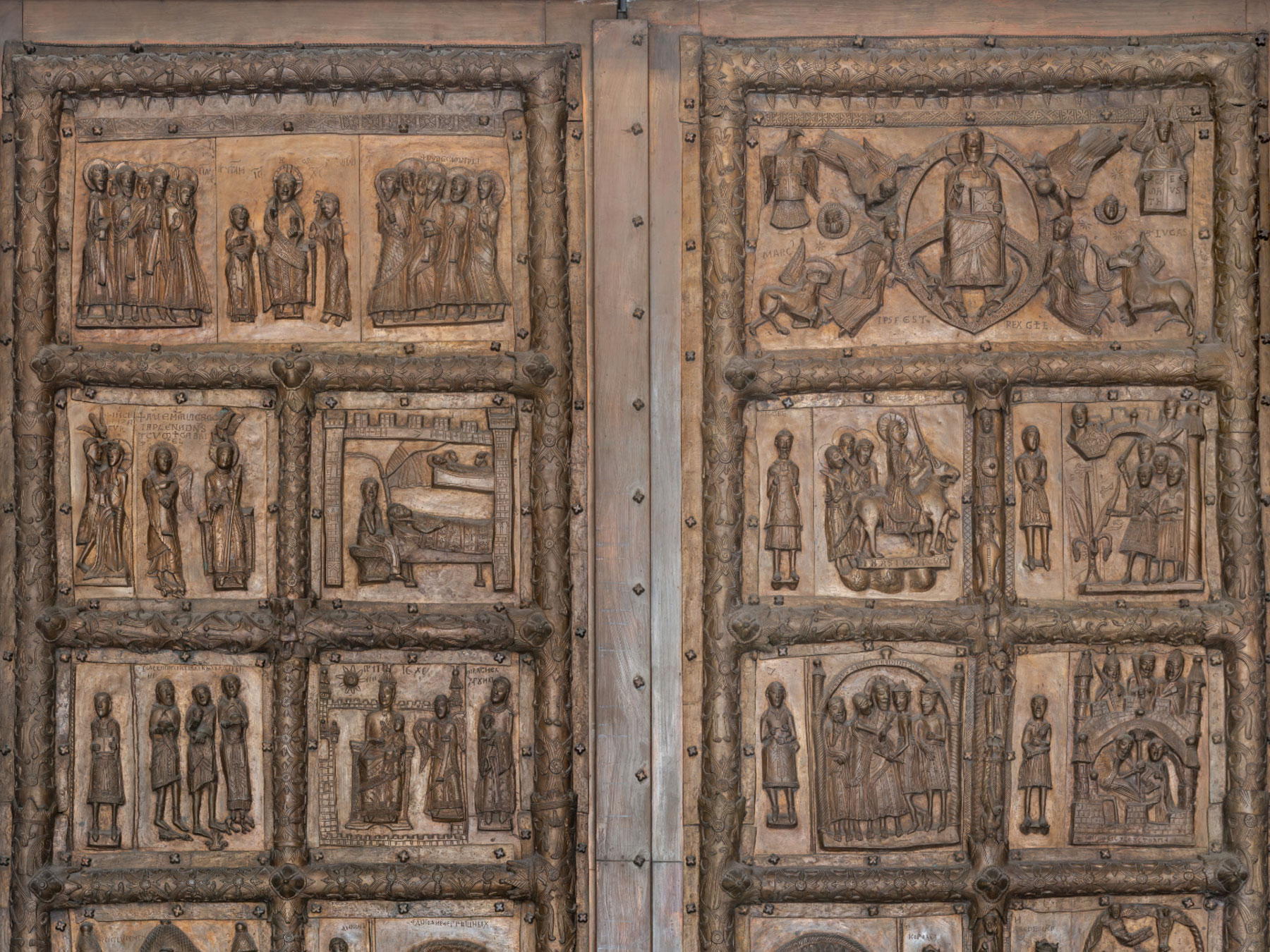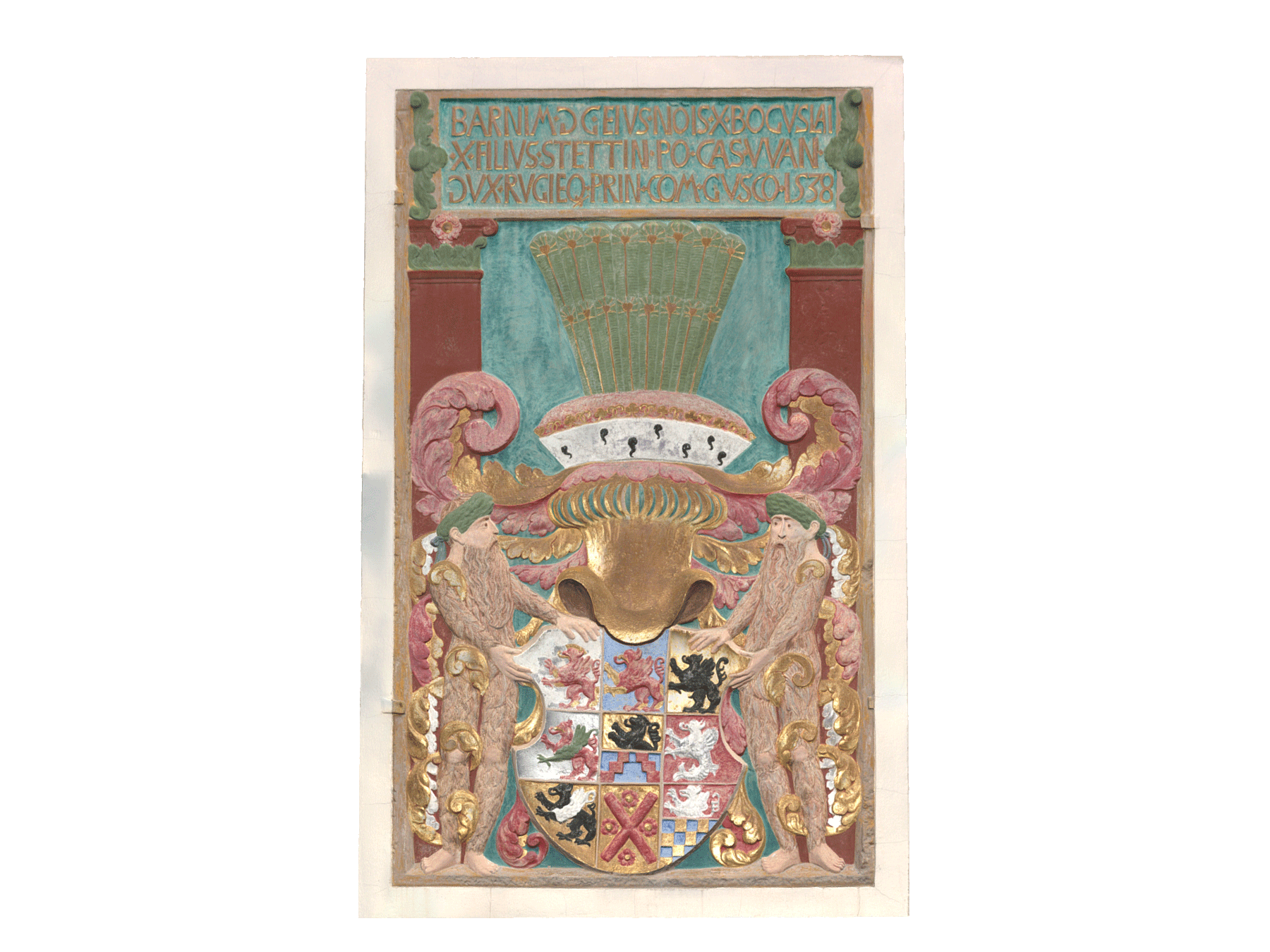College of the Apostles with Mary (Mater Apostolorum)
College of the Apostles
The College of the Apostles refers to the group of twelve apostles whom Jesus Christ chose as His closest disciples and companions during His earthly ministry. In the New Testament, the apostles play a key role in spreading the teachings of Jesus and establishing the Christian Church.
The upper panel of the left wing of the Płock Doors highlights the special role played by the Apostles in spreading the Christian faith within the Universal Church. In the early Middle Ages, there was a custom in miniature painting and wall painting to place the College of the Twelve near compositions of Christ in the type of Maiestas Domini, as seen in this panel.
Mary (Mater Apostolorum)
Mater Apostolorum is a Latin phrase meaning “Mother of the Apostles.” It is one of the titles given to Mary, the mother of Jesus, in Catholic tradition. This title signifies her special role as the spiritual mother of the apostles and the entire Church. It emphasizes her importance as a guide and protector for the community of believers, supporting them in spreading the teachings of Jesus Christ.
Mary as “Mater Apostolorum” is often honored in the context of prayers for priestly and missionary vocations, asking for her support for those who follow Christ in the apostolic spirit.
The presence of Mary together with the Apostles is consistent with the description of the Ascension in the Acts of the Apostles.
Płock Doors
The Płock Doors, also known as the Magdeburg Doors, Korsun Doors, or Sigtuna Doors, were bronze doors once located in the Cathedral Basilica of the Assumption of the Blessed Virgin Mary in Płock. This is a relic of Romanesque art. Currently, the original doors are in the western portal of St. Sophia’s Cathedral in Veliky Novgorod, Russia, and a bronze casting (copy) has been in the Płock Cathedral since 1982.
Research indicates that the doors were probably in Płock for about 250 years before they adorned St. Sophia’s Cathedral in Veliky Novgorod. It is unclear how the doors ended up in Novgorod. According to a 15th-century legend, they were brought from Byzantium by Prince Vladimir the Great via Korsun in Crimea (hence the name Korsun Doors), although this is unlikely.
According to some historical hypotheses, they were looted in the 13th century by Lithuanians during their raid on Masovia. Other historians believe they were given as a gift by the Polish clergy or the dukes of Płock to Prince Lingwen Olgierdovich of Novgorod, brother of Władysław II Jagiełło. Some sources say they arrived in Novgorod as early as 1170, shortly after being made, while others suggest before the mid-15th century. According to a version announced in 1823 by Friedrich von Adelung, the doors are a military trophy of the Novgorodians (specifically Karelians, Estonians, Izhoras, and northern Russians), who captured them in 1187 during an expedition to the then-capital of Sweden, Sigtuna (hence the 19th-century name Sigtuna Doors).
The doors for the Płock Cathedral were ordered by Bishop Alexander of Malonne (died 1156). Master Riquin, with assistant Waismut, cast them in bronze using the lost-wax technique between 1152 and 1154 in one of the Magdeburg foundries. It is uncertain whether it belonged to the local fabrica ecclesiae, operating at the cathedral, managed by Bishop Wichman of Wettin (c. 1110–1192).
Figures of bishops and craftsmen are among the reliefs, to which in the first quarter of the 15th century, the representation of a Russian caster, Master Abraham, was added. He also adapted the doors to the western portal of the St. Sophia Cathedral in Veliky Novgorod, adding Cyrillic inscriptions translated from Latin. It is hypothetically assumed that the doors were looted from Płock at the end of the 13th century and, after various fates, were hung as a “copper icon” in an Orthodox church at the beginning of the 15th century.
3D models
)
)
)
)
)
)
)
)
)